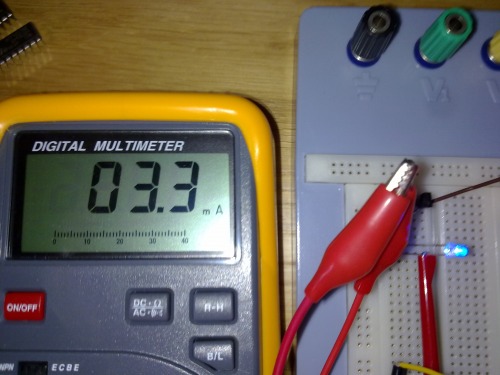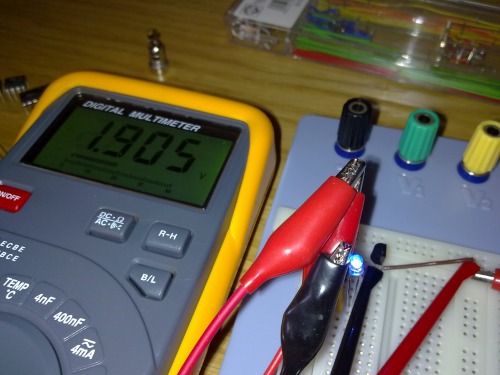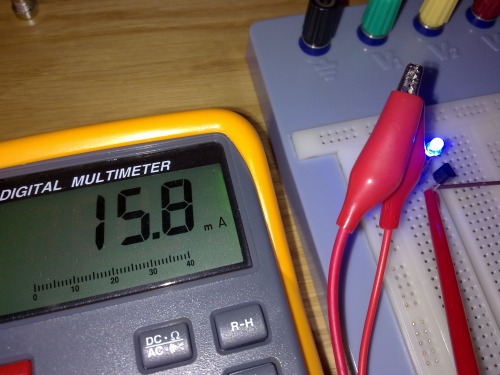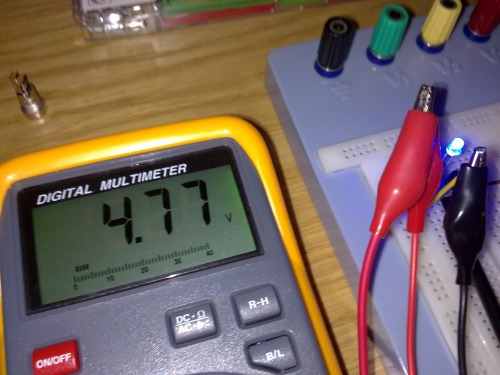Hello Folks. I want to share with all what happened to me, why I was being wrong and what I learned:
The preface:
I'm making a police-style led flasher for an RC car and decided to drive the LEDs using MOSFETs instead of transistors, for obvious Gate Current advantages.
The problem:
So I bought some 2N7000 ones and replaced them on my breadboard making them correspond with the place of the BJTs, so Gate to the Base, Drain to the Collector and Source to the Emitter.
Then I turned on the circuit with great expectation and... saw that the LEDs where much more dimmed than when driven by the transistors.
The research:
I started with lots of measurements and discovered that through the LEDs was flowing a current of only about 3.3mA, as You can see in that picture:

I supposed it to be the resistor, but powering the LED directly, it was shining at full current...
The solution:
Yesterday under a hot flowing shower (please don't think I'm mad) I finally solved that mystery.
The MOSFET needs on its Gate a voltage equal to or greater than the Threshold Voltage and it was OK because I were giving it +5V directly.
But then I understood it was pretty much less because I were putting the load between the Source and the Ground, and being the LED and its resistor calculated to have a dropout of nearly 5V, the voltage difference between the Gate and the Source was insufficient to allow the full current flow, as You can see there:

So I quickly inverted the circuit, putting the load between Vdd and Drain, connecting the Source directly to Ground, and finally got my LED shining with glory:


Above You see that the Threshold Voltage is finally right.
The conclusion:
So what we finally learn from this is that when messing around with MOSFETs, which are amazing components, we have to keep in mind that the Body is hard-connected to the Source, thus being our Bottom Voltage Reference for the Gate.
So remember to put the Load always to Drain ;-)
That's all, hope it helped someone!
P.S. If I write something wrong please correct me, I'm not English and I want to learn things in the proper way ;-)
Also if You think that text was too long and boring, let me know and I'll adjust it.



